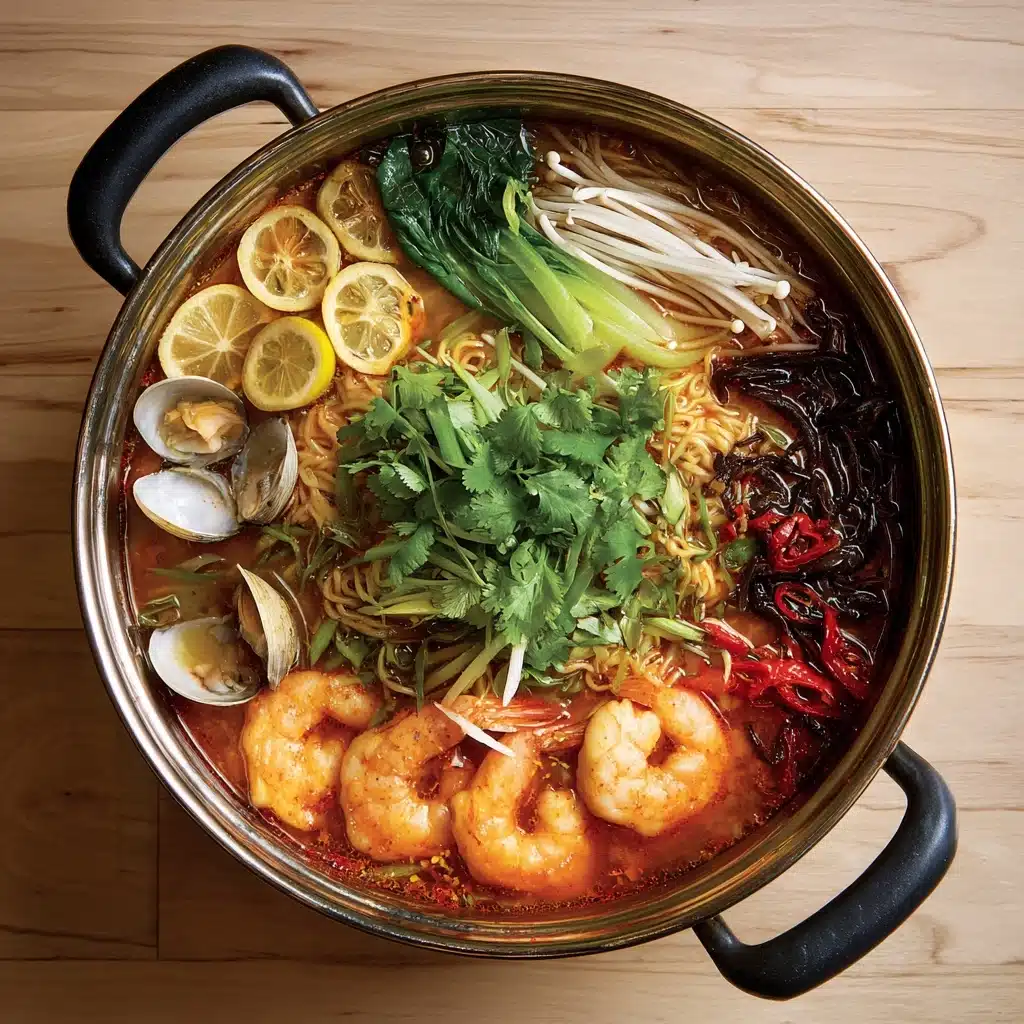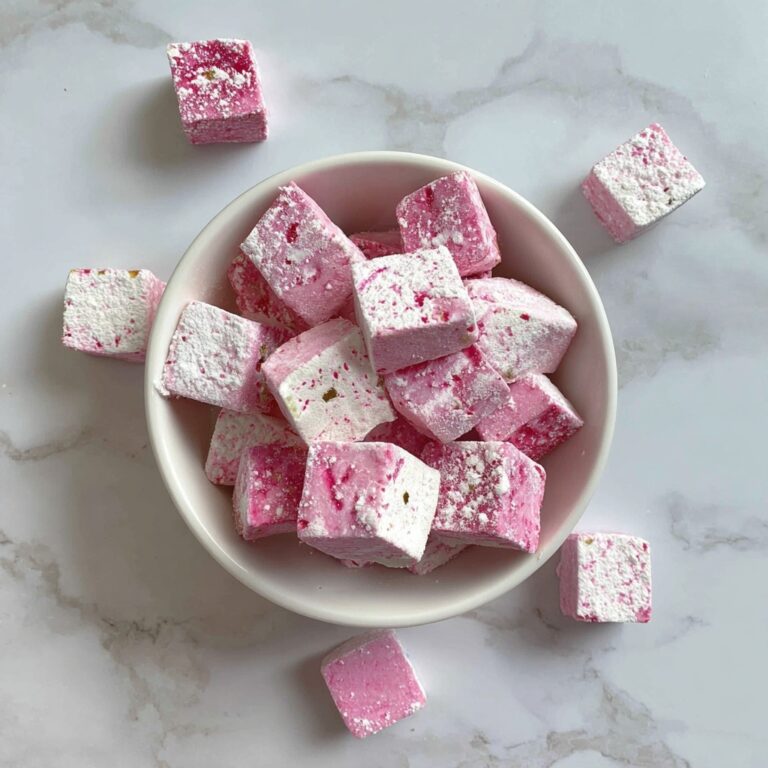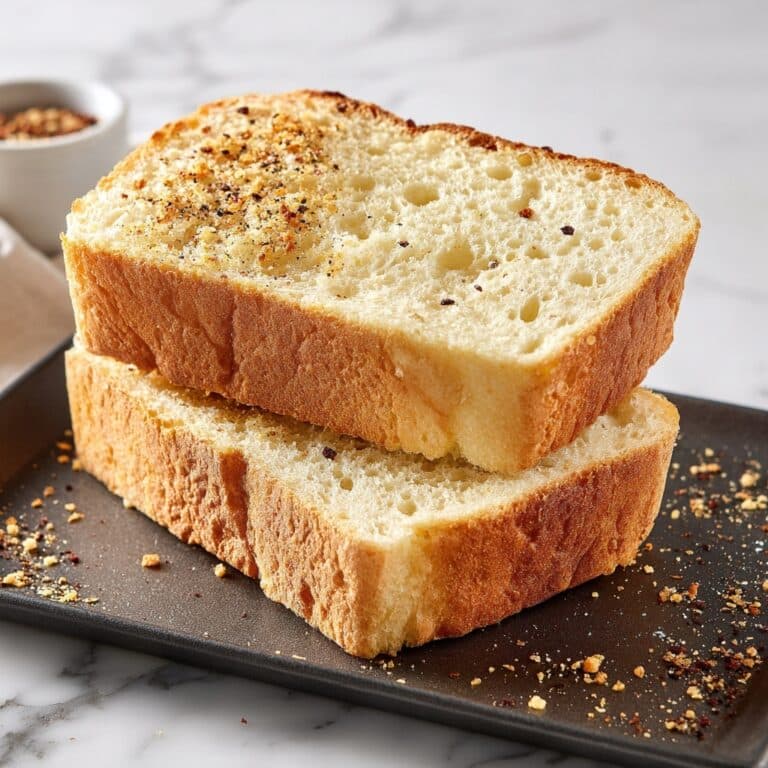If you’re craving a comforting, vibrant meal that’s brimming with flavors from the sea and the garden, you’ll absolutely fall in love with Spicy Korean Seafood and Vegetable Stew. This bubbling pot of goodness combines tender shrimp, succulent squid, and fresh shellfish with a rainbow of crisp vegetables, all swimming in a broth that’s bold, spicy, and deeply satisfying. It’s the sort of dish that instantly warms your heart, whether you’re gathering friends for a special dinner or treating yourself to a taste of Korea at home.
Ingredients You’ll Need
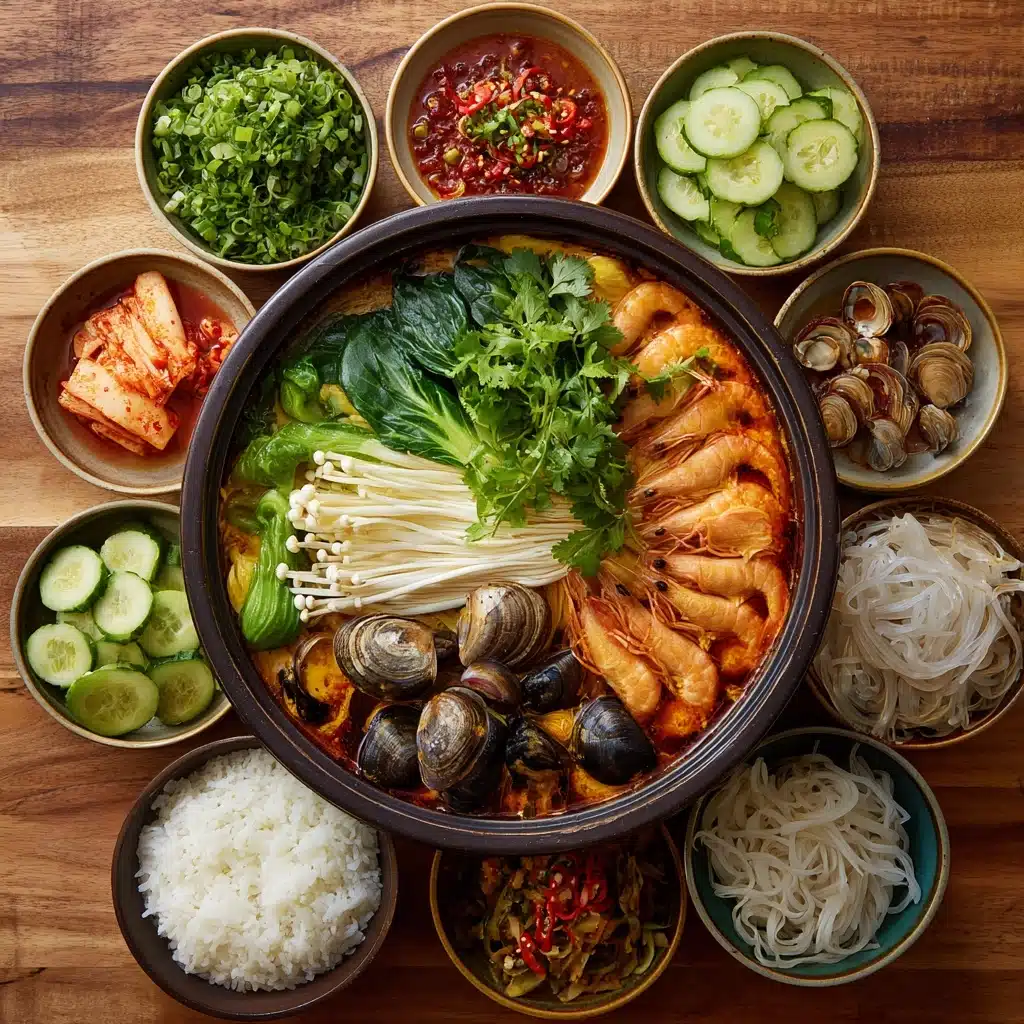
Ingredients You’ll Need
The magic of Spicy Korean Seafood and Vegetable Stew lies in its beautiful medley of straightforward ingredients. Each one plays a distinct role, coming together to deliver the perfect balance of fire, umami, and fresh crunch in every spoonful.
- Shrimp (1/2 pound, peeled and deveined): Adds sweet, tender bites that soak up the spicy broth beautifully.
- Squid (1/2 pound, cleaned and sliced into rings): Offers a pleasant, slightly chewy texture and a subtle ocean flavor.
- Littleneck clams or mussels (6, scrubbed): Lend briny richness to both the stew and the broth — just be sure to discard any that don’t open.
- Onion (1/2, sliced): Gives natural sweetness and depth to the simmering base.
- Napa cabbage (1 cup, chopped): Becomes silky and mild, soaking up all the aromatic flavors.
- Zucchini (1 small, halved and sliced): Adds color and gentle sweetness with a soft bite.
- Mushrooms (1 cup, shiitake or enoki): Bring earthy notes and meaty texture—feel free to mix and match types.
- Green onion (1, chopped): Delivers a fresh pop of color and a delicate oniony finish.
- Garlic (2 cloves, minced): Infuses the stew with irresistible aroma and savory complexity.
- Gochujang (1 tablespoon, Korean chili paste): Provides that signature deep heat and fermented complexity.
- Gochugaru (1 tablespoon, Korean chili flakes): Gives the stew its lively red hue and customizable spice level.
- Soy sauce (1 tablespoon): Adds a punch of saltiness and umami to round out the broth.
- Sesame oil (1 teaspoon): Offers a finishing touch of nutty richness.
- Sugar (1/2 teaspoon): Balances out the heat, letting all the flavors shine.
- Anchovy or vegetable broth (4 cups): Forms the soul-soothing base—anchovy broth is traditional but veggie broth is great for a pescatarian twist.
How to Make Spicy Korean Seafood and Vegetable Stew
Step 1: Prepare Your Broth
Start by bringing your anchovy or vegetable broth to a steady simmer in a large soup pot over medium heat. Good broth is the secret to this dish’s soulfulness—anchovy broth creates an authentic, ocean-kissed base, while vegetable broth offers a lighter, cleaner alternative if you’d prefer to keep it completely plant-based.
Step 2: Mix the Spicy Seasoning Paste
In a small bowl, combine the gochujang, gochugaru, soy sauce, sesame oil, sugar, and minced garlic. Stir everything together until you have a thick, fragrant paste. This punchy mixture is the flavor engine for your Spicy Korean Seafood and Vegetable Stew, so don’t be shy about customizing—add extra gochugaru if you like it hot or tone it down for a gentler kick.
Step 3: Simmer the Vegetables
Drop the sliced onion, napa cabbage, zucchini, and your choice of mushrooms into the simmering broth. Let them bubble away for about 5 minutes, just until they start to soften and release their flavors into the broth. This step sets the stage for a stew that’s layered, not just spicy, but naturally sweet and savory from the veggies.
Step 4: Add the Spicy Paste
Spoon in the spice paste you prepared earlier, stirring well to ensure it dissolves evenly into the broth. You’ll instantly see the color deepen to a tempting red, and your kitchen will be filled with the unmistakable aroma of Korean comfort food taking shape.
Step 5: Add the Seafood
Carefully add the shrimp, squid, and clams or mussels to the pot. Cover with a lid and let everything simmer gently for another 5 to 7 minutes, or until the seafood is just cooked through and the shellfish have popped open (discard any that stay closed). The seafood cooks quickly, so keep a close eye—overcooking makes shrimp and squid rubbery rather than tender.
Step 6: Finish and Serve
Right before serving, sprinkle the chopped green onion across the top of your Spicy Korean Seafood and Vegetable Stew for a burst of freshness and color. Now the stew is ready to ladle into bowls, piping hot and perfectly spiced!
How to Serve Spicy Korean Seafood and Vegetable Stew
Garnishes
Top each steaming bowl with a generous handful of freshly chopped green onions and, if you love a little extra crunch, a sprinkle of toasted sesame seeds. Sometimes, a light drizzle of sesame oil or even a few thin slices of red chili will make your Spicy Korean Seafood and Vegetable Stew look irresistible and taste even better.
Side Dishes
For an authentic Korean meal, serve this stew alongside fluffy steamed rice and, of course, kimchi. You can round out the table with simple cucumber salad or silky soft tofu for extra comfort. The rice works wonders for soaking up all the spicy, savory broth and cooling your palate between bites.
Creative Ways to Present
You can serve the spicy stew straight from the bubbling pot at the center of the table for a traditional hot pot experience—it’s always a hit! Or, portion it into individual stone bowls (dolsot) for dramatic presentation and extra heat retention. If you’re feeling playful, offer a toppings bar with things like extra green onions, chili oil, and julienned perilla leaves, letting everyone customize their bowls just the way they like.
Make Ahead and Storage
Storing Leftovers
If you find yourself with leftover Spicy Korean Seafood and Vegetable Stew, you’re in for a treat the next day. Let the stew come to room temperature before transferring it to an airtight container. Store it in the fridge for up to 2 days. Keep in mind that the seafood is best enjoyed fresh, so try to remove the shellfish before storing for best results.
Freezing
Freezing isn’t recommended for this stew, since the seafood and tender vegetables lose their lovely texture after being frozen and reheated. If you do want to freeze, set aside a portion of just the broth and vegetables (without seafood), then add fresh seafood when reheating for a second round of stew.
Reheating
To reheat, pour the stew into a pot and warm it gently over low heat until everything is just heated through—avoid vigorous boiling so the shrimp and squid stay tender. If the broth seems a bit concentrated, add a splash of water or broth to adjust. Give it a quick taste and add a dash of soy sauce or gochugaru if you’d like to boost the flavor.
FAQs
Can I use frozen seafood for this stew?
Absolutely! Frozen seafood like shrimp and squid work well—just make sure they are fully thawed and patted dry before adding to the stew. Frozen shellfish can also be used, but give them a quick rinse and check for cracked or damaged shells before including them.
What if I can’t find gochujang or gochugaru?
If Korean chili paste (gochujang) or chili flakes (gochugaru) aren’t available at your local store, try Asian markets or shop online. In a pinch, you can mix sriracha or another Asian chili paste with a bit of sugar for the gochujang, and substitute with mild red chili flakes for gochugaru. The result won’t be perfectly traditional, but it will still be delicious!
How can I make this stew less spicy for kids or spice-sensitive eaters?
To dial down the spice, simply reduce the amount of gochugaru and gochujang, or leave them out entirely for a milder broth. The natural sweetness from onion, zucchini, and cabbage will still make the dish comforting and full of flavor, and diners can always add spice to individual bowls at the table.
What are some good seafood substitutes?
This stew is incredibly versatile! You can swap in cod, white fish fillets, scallops, or even crab legs for the shrimp and squid. Use whatever seafood looks freshest and most inviting at the market, making the Spicy Korean Seafood and Vegetable Stew your own signature creation.
Is this recipe gluten-free?
It’s nearly gluten-free as written, but double-check your gochujang and soy sauce—many traditional brands contain wheat. Substitute with gluten-free tamari and look for gluten-free gochujang to safely enjoy this vibrant, spicy stew.
Final Thoughts
Once you taste the vibrant heat and fresh, ocean-bright flavors of Spicy Korean Seafood and Vegetable Stew, it’s easy to see why it’s such a beloved comfort food. Gather up your favorite seafood and hearty vegetables, and let this showstopping dish warm you right down to your toes. Go ahead—invite your loved ones to the table and savor this bold, lively stew for yourself!
Print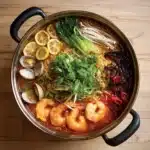
Spicy Korean Seafood and Vegetable Stew Recipe
- Total Time: 30 minutes
- Yield: 4 servings 1x
- Diet: Non-Vegetarian
Description
Experience the bold, spicy flavors of Korea with this delicious Spicy Korean Seafood and Vegetable Stew. Packed with a variety of seafood and vegetables simmered in a savory and fiery broth, this dish is perfect for warming up on chilly days or for a cozy homemade meal.
Ingredients
Seafood:
- 1/2 pound shrimp, peeled and deveined
- 1/2 pound squid, cleaned and sliced into rings
- 6 littleneck clams or mussels, scrubbed
Vegetables:
- 1/2 onion, sliced
- 1 cup napa cabbage, chopped
- 1 small zucchini, halved and sliced
- 1 cup mushrooms (shiitake or enoki)
- 1 green onion, chopped
- 2 cloves garlic, minced
Seasonings:
- 1 tablespoon gochujang (Korean chili paste)
- 1 tablespoon gochugaru (Korean chili flakes)
- 1 tablespoon soy sauce
- 1 teaspoon sesame oil
- 1/2 teaspoon sugar
Broth:
- 4 cups anchovy or vegetable broth
Instructions
- Prepare the Spicy Seasoning Paste: In a small bowl, mix the gochujang, gochugaru, soy sauce, sesame oil, sugar, and garlic until well combined.
- Simmer the Broth: In a large pot, bring the anchovy or vegetable broth to a simmer over medium heat.
- Add Vegetables: Add onion, napa cabbage, zucchini, and mushrooms to the pot and simmer for 5 minutes.
- Season and Mix: Stir in the spicy paste and mix well.
- Incorporate Seafood: Add shrimp, squid, and clams or mussels, cover, and simmer for 5–7 minutes until seafood is cooked.
- Serve: Discard any unopened clams or mussels and top with green onions before serving.
Notes
- Serve with steamed rice and kimchi for an authentic Korean meal.
- Adjust spice level by varying gochugaru quantity.
- Seafood choices can be customized based on preference or availability.
- Prep Time: 15 minutes
- Cook Time: 15 minutes
- Category: Main Course
- Method: Simmering
- Cuisine: Korean
Nutrition
- Serving Size: 1 bowl
- Calories: 260
- Sugar: 5g
- Sodium: 920mg
- Fat: 9g
- Saturated Fat: 1g
- Unsaturated Fat: 7g
- Trans Fat: 0g
- Carbohydrates: 14g
- Fiber: 2g
- Protein: 30g
- Cholesterol: 110mg
